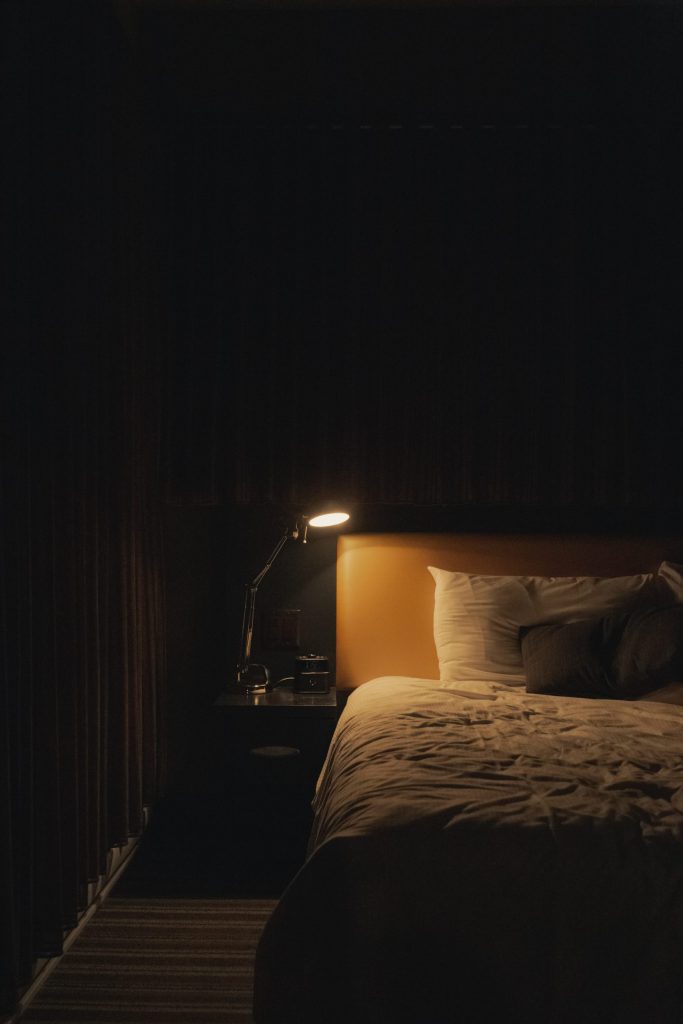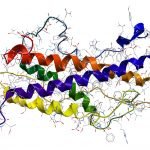JOYCE KNIEFF, ND, EAMP, RH(AHG)
Sleep problems have long been a common complaint. Global studies estimate that it has historically affected from 10-30% of the general population.1 Recently, global uncertainty has increased and this prevalence is estimated to be as high as 40% of the general and healthcare populations.2 Studies have also shown that insomnia and sleep troubles can emerge specifically in relation to anxieties around COVID-193,4 or as a direct result of having the illness.2,5,6 Clinicians will likely see an increase in sleep complaints if they have not already. Furthermore, given the extent and severity of negative health consequences associated with poor sleep, insomnia must be treated seriously and comprehensively. As practitioners, we should strive to repair the base constitution of our patients so that they can rest well and awaken refreshed – without the need for lifetime assistance from supplements and/or medication.
Trouble sleeping is something practically everyone has experienced at some point and, especially to those that may have an easier time falling or staying asleep, insomnia may seem like a relatively straightforward condition with specific, well-researched treatment protocols. However, unless someone has truly gone without sleep for extended periods of time, unless they have experienced the sense of powerlessness that accompanies losing the ability close one’s eyes and fully relax, and unless they have gone through the often maddening reality of feeling completed depleted yet still having to function throughout the day, one can only try to understand what it is like for patients who live with insomnia. As clinicians, it can be challenging to know how to help these people. Insomnia can present with a wide variety of symptoms and symptom severity, and it is often accompanied by comorbidities that can be physiological and/or psychological in nature. In addition to assessing sleep quality, clinicians also must determine barriers to falling asleep, staying asleep, how restorative the sleep is, and what underlying causes may be present.
Treating insomnia from such a holistic perspective is an area where Traditional Chinese Medicine (TCM) shines. In TCM, the specifics of the case must be collected in detail so the practitioner may present the most effective treatment possible. These treatments are effective not just in for short-term insomnia, but also in repairing the patient’s constitution so that they may eventually be tapered from any medications. There are several classic constitutional patterns in TCM that can manifest as insomnia.7,8 This article explores the 5 most common patterns of insomnia in detail, as characterized by TCM, and includes the most effective herbal therapeutics for each pattern.8
Heart Blood and Spleen Qi Deficiency
Most commonly, insomnia patients exhibit a combination of Heart Blood and Spleen Qi Deficiency. This type of patient cannot initiate sleep nor fall back asleep because of racing thoughts and is in a constant state of worry. Sleep is usually shallow and disturbed by dreams, causing the patient to wake frequently in the night. While awake, this patient may complain of anxiety and worry (due to overthinking), shortness of breath, palpitations, poor memory, and significant mental and physical fatigue.7 In clinical practice, this is often the patient that seems to have no other health issues or complaints. Yet this patient may have a stressful work or school life that requires them to mentally plan and juggle their schedule. This constitutional pattern may also present with a diagnosis of Dampness, which manifests in symptoms such as a physical sensation of heaviness, brain fog, and lingering exhaustion upon waking, no matter how long they have spent in bed.
Excessive worry is the most common cause of insomnia exhibited by patients with a Heart Blood and Spleen Qi Deficiency pattern.7 The traditional formula for this type of insomnia is Gui Pi Tang; it is also the most common standardized formula used to treat insomnia in randomized control studies of TCM.1 If stress has been long and severe, Suan Zao Ren Tang may be considered as an additional formula.9,10 Suan Zao Ren Tang is a wonderful formula that may also help improve outcomes for other short-term measures for insomnia. In a meta-analysis of 13 studies, Suan Zao Ren Tang was shown to have fewer side effects than diazepam, and Suan Zao Ren Tang combined with diazepam reduced insomnia symptoms more effectively than using diazepam alone.11
Heart Yin Deficiency
The second most common form of insomnia is seen in patients exhibiting Heart Yin Deficiency. These patients have considerable difficulty falling asleep but will eventually be able to do so most nights. Once asleep, this patient has frequent dreams that they may not remember. Common symptoms include palpitations when lying down, a dry mouth and parched throat, night sweats, and hot flashes that are worse at night. They may also present with significant anxiety.7 Female patients just after entering menopause often exhibit Heart Yin Deficiency, and it has been seen in many post-COVID cases as well.
The traditional formula used for this constitution is Tian Wang Bu Xin Dan.7 This is a common formula used in insomnia and has also been shown in meta-analyses to potentiate the effects of other pharmaceutical drugs.12 The amount of Ziziphus jujuba semen in this formula can be modified to suit the patient, with lower doses having an anxiolytic effect and higher doses having stronger sedative and hypnotic effects.13
Heart and Kidney Disconnect
The Heart and Kidney Disconnect patient often shares similarities to the Heart Yin Deficiency patient, but commonly presents with more severe insomnia. This type of patient has great difficulty falling asleep and may not fall asleep for the entire night unless they take powerful hypnotic medications. This patient may also experience dizziness and tinnitus that complicates falling or staying asleep. They may be forgetful, prone to anxiety or depression, and may have a significant picture of back and knee pain or weakness.7 Clinically, this is usually an older patient who has a history of physical trauma, psychological trauma, or has lived a hard life. This symptom picture can also be seen in long COVID patients.
This insomnia pattern is often difficult to treat but is best managed with a combination of the formulas Jiao Tai Wan and Huang Lian E Jiao Tang.7 Jiao Tai Wan is a very simple formula that consists of 5 parts Coptis chinensis rhizoma and 1 part Cinnamomum cassia cortex. In an animal study, Jiao Tai Wan not only increased sleep time and duration in slow wave sleep, but also reversed the systemic inflammation and increase in insulin resistance caused by sleep deprivation.14 Additional study is necessary to determine if similar results would be found in human subjects.
Liver-Qi Stagnation with Liver and Gallbladder Heat
Another common insomnia pattern, the presentation of Liver Qi Stagnation with Liver and Gallbladder Heat is characterized by the presence of significant irritability. These patients cannot get comfortable at night. They have many dreams and wake easily. These are the classic patients that wake up at precisely 3 am every night (3 am being the end of the Liver’s most active/restorative time on the Chinese Organ Clock). Classic symptoms include bloating under the ribs, frequent sighing or yawning, red and/or dry eyes, and a bitter taste in the mouth.7 Clinicians see this pattern in patients who live under significant amounts of stress. They may have low motivation and depression; they may also have an alcohol habit and a poor diet.7,8
The Liver and Gallbladder Heat in this type of patient usually manifests as high blood pressure, red eyes, and significant anger and irritability. For this type of presentation, a 1- to 3-week course of Long Dan Xie Gan Tang may be appropriate as an acute treatment,7 followed by Chai Hu Long Gu Mu Li Tang as a longer-term constitutional treatment for insomnia. In a systemic review of 22 studies, Chai Hu Long Gu Mu Li Tang was found to have potentially better efficacy and safety than conventional insomnia medications.15 If stress is high during the day, and depression or irritability is severe, Xiao Yao San may be another formula to add during daytime hours to further soothe the accompanying Liver Qi Stagnation.9,16
Internal Disturbance of Phlegm Heat
In this type of patient presentation, insomnia manifests primarily as a difficulty in settling down or getting comfortable due to mental or physical restlessness. Dreams often wake this patient from sleep and delusions may linger upon waking. When waking in the middle of the night, this kind of patient may experience significant paranoia as well. There is usually a physical phlegm picture also, whether that be a need to cough up phlegm from the throat in the morning or a stuffy nose throughout the day.7 Patients often will have a sense of dizziness, vertigo, or nausea, and a sticky sensation in the mouth that tastes bitter.7 Clinically, this is a pattern often seen in patients with other psychological comorbidities. Patients may have significant anxiety, obsessive-compulsive tendencies, manic behavior, or even hallucinations and delusions.17
The appropriate prescription for insomnia due to Internal Disturbance of Phlegm Heat is Wen Dan Tang.7,17 This formula has been shown in animal studies to significantly reduce the negative emotions and anxieties that may surround insomnia,18,19 and it has many case studies that show efficacy in treating major mental illness.17 To increase the effectiveness of Wen Dan Tang in treating insomnia, Dimocarpus longan fructus, Ziziphus jujuba semen, and Magnoliae officianalis cortex may be added to the formula.
Further Considerations
Other patterns and constitutional presentations exist for insomnia, but the 5 presented in this article represent roughly 75% of those clinicians will likely see in clinical practice.8 Though it is not unusual to see a patient present with one clear constitutional pattern, in some cases a patient may also present with a combination of patterns. These complex cases often call for modifying and potentially combining formulas. For example, the Heart Blood and Spleen Qi Deficiency pattern can co-occur with Liver Qi Stagnation. An effective combination for this situation would be to use Gui Pi Tang and Xiao Yao San at the same time. For patients that require more convenience in taking a prepared formula, many modern Chinese herbal companies have converted several of the traditional formulas into convenient tablet or capsule forms. Herbal companies that manufacture concentrated granules also sometimes offer compounding services for qualified professionals, making modifications of these formulas for specific patients much easier.
TCM is a powerful modality. Not only do many of these formulas produce tangible improvements in sleep quality, latency, and duration within the first 4 weeks of treatment (the experimental duration of many studies investigating TCM), but based on my own clinical experience and numerous anecdotal cases, continued usage of TCM can allow for a curative effect on insomnia. In many cases, the use of Chinese herbal medicine as an adjunct can help patients taper off other sleep medications. Over time, as the patient’s own constitution changes, the Chinese herbs themselves may also be modified or slowly tapered off.20
References
- Yeung WF, Chung KF, Poon MM, et al. Chinese herbal medicine for insomnia: a systematic review of randomized controlled trials. Sleep Med Rev. 2012;16(6):497-507.
- Uvais NA, Moideen S, Hafi B, et al. Insomnia in COVID-19 survivors: A cross sectional study among healthcare workers. Chronobiology in Medicine. 2021;3(3):102-106.
- Meaklim H, Junge MF, Varma P, et al. Pre-existing and post-pandemic insomnia symptoms are associated with high levels of stress, anxiety, and depression globally during the COVID-19 pandemic. J Clin Sleep Med. 2021;17(10):2085-2097.
- Jahrami H, BaHammam AS, Bragazzi NL, et al. Sleep problems during the COVID-19 pandemic by population: a systematic review and meta-analysis. J Clin Sleep Med. 2021;17(2):299-313.
- Anwar Garcia Santos R, Rodriguez Rodriguez M, Rodriguez Cruces R, et al. Insomnia in post COVID-19 hospitalized patients. J Neurol Sci. 2021;429:119875.
- El Sayed S, Gomaa S, Shokry D, et al. Sleep in post-COVID-19 recovery period and its impact on different domains of quality of life. Egypt J Neurol Psychiatr Neurosurg. 2021;57(1):172.
- Tsen YZ. Insomnia. 不寐 (Medical Bianstone). Available at: http://yibian.hopto.org/diag/syp.php?sypno=53. Accessed January 21, 2022.
- Poon MM, Chung KF, Yeung WF, et al. Classification of insomnia using the traditional Chinese medicine system: a systematic review. Evid Based Complement Alternat Med. 2012;2012:735078.
- Liu L, Liu C, Wang Y, et al. Herbal Medicine for Anxiety, Depression and Insomnia. Curr Neuropharmacol. 2015;13(4):481-493.
- Yeh CH, Arnold CK, Chen YH, et al. Suan zao ren tang as an original treatment for sleep difficulty in climacteric women: a prospective clinical observation. Evid Based Complement Alternat Med. 2011;2011:673813.
- Zhou QH, Zhou XL, Xu MB, et al. Suanzaoren Formulae for Insomnia: Updated Clinical Evidence and Possible Mechanisms. Front Pharmacol. 2018;9:76.
- Yang XQ, Liu L, Ming SP, et al. Tian Wang Bu Xin Dan for Insomnia: A Systematic Review of Efficacy and Safety. Evid Based Complement Alternat Med. 2019;2019:4260801.
- Peng WH, Hsieh MT, Lee YS, et al. Anxiolytic effect of seed of Ziziphus jujuba in mouse models of anxiety. J Ethnopharmacol. 2000;72(3):435-441.
- Zou X, Huang W, Lu F, et al. The effects of Jiao-Tai-Wan on sleep, inflammation and insulin resistance in obesity-resistant rats with chronic partial sleep deprivation. BMC Complement Altern Med. 2017;17(1):165.
- Wang X, Ju J, Li J, et al. Chaihu Longgu Muli decoction, a Chinese herbal formula, for the treatment of insomnia: A systematic review and meta-analysis. Medicine (Baltimore). 2020;99(40):e22462.
- Zhang Y, Han M, Liu Z, et al. Chinese herbal formula xiao yao san for treatment of depression: a systematic review of randomized controlled trials. Evid Based Complement Alternat Med. 2012;2012:931636.
- Maciocia G. Qi Stagnation and Phlegm. In: The Psyche in Chinese Medicine: Treatment of Emotional and Mental Disharmonies with Acupuncture and Chinese Herbs. Edinburgh: Churchill Livingstone; 2009.
- Wu F, Song Y, Li F, et al. Wen-dan decoction improves negative emotions in sleep-deprived rats by regulating orexin-a and leptin expression. Evid Based Complement Alternat Med. 2014;2014:872547.
- Wang L, Song Y, Li F, et al. Effects of Wen Dan Tang on insomnia-related anxiety and levels of the brain-gut peptide Ghrelin. Neural Regen Res. 2014;9(2):205-212.
- Zhang TW. 中醫證治學 失眠 (TCM Differentiation: Insomnia Patterns). Oral presentation at Guo Fang Medical School; October 5, 2017; Taipei, Taiwan.

Joyce Knieff ND, EAMP, RH(AHG), is the owner and co-founder of Yggdrasil Naturopathic Medicine in Minnetonka, Minnesota. She specializes in helping people who suffer from autoimmune conditions, gastrointestinal issues, mental health problems, and chronic pain feel better, more alive, and live their lives more fully. Dr Knieff believes her patients should be able to determine the quality of their lives, not their diagnosed conditions. For more about Dr Joyce, visit her blog at: https://thedoctorsknieff.com/.





